CCTV systems have become a staple in both residential and commercial security, providing peace of mind and a valuable deterrent against theft, vandalism, and unauthorised access.
As technology has advanced, wireless CCTV systems have gained popularity for the convenience and flexibility they offer.
Unlike traditional wired systems, which rely on cables to transmit video data, wireless CCTV systems use Wi-Fi or cellular networks to connect, allowing for easier installation, flexible placement options, and remote monitoring from mobile devices.
While BES Security offers a wide range of CCTV solutions tailored to specific security needs, our expert team conducts professional assessments to help clients select the right type of CCTV camera and optimal placements for effective coverage.
This guide explores how wireless CCTV systems work, highlighting their benefits, key features, and how they compare to wired systems, so you can make informed decisions about your security.

What is a Wireless CCTV System?
A wireless CCTV system is a security setup that captures video footage through cameras and transmits it to a connected device without using physical cables. Instead, these systems use Wi-Fi or cellular networks to send and receive data.
Wireless systems have become popular in both homes and businesses due to their ease of installation and adaptability, making them particularly useful in locations where running cables would be difficult or costly.
The benefits of wireless CCTV systems include quicker installation, as there’s no need to wire the cameras through walls or ceilings, and greater flexibility in where cameras can be placed.
Additionally, wireless systems offer the convenience of remote monitoring, allowing users to access live footage or recorded video from a mobile device, even when they’re off-site. This level of accessibility provides enhanced security and peace of mind, as users can check in on their property at any time.
How Wireless CCTV Cameras Differ from Wired Systems
While both wireless and wired CCTV systems serve the same purpose of monitoring and recording activity, there are key differences in how they operate. Wired systems transmit data through physical cables, typically connected to a central recording device or monitor.
This setup ensures a consistent and reliable signal, but installation can be complex and limited by cable length, making relocation more challenging.
In contrast, wireless CCTV systems rely on Wi-Fi or cellular signals to transmit data. This eliminates the need for extensive wiring, making installation simpler and allowing for easy repositioning of cameras as security needs change.
However, wireless systems are more reliant on network strength and quality, meaning factors like Wi-Fi range, signal interference from nearby devices, or physical obstructions can impact performance.
Additionally, while some wireless cameras are battery-powered, others may still require a power source, which could limit placement options.
Despite these considerations, wireless CCTV systems offer valuable advantages in flexibility, especially for users who prioritise ease of installation, remote access, and the ability to adapt their security setup as needed.
How Does a Wireless CCTV System Work?
A wireless CCTV system consists of several core components that work together to capture, transmit, and store video footage effectively:
Cameras
Wireless CCTV cameras are the primary components that capture footage. They come in various types, such as dome, bullet, and PTZ, each designed for different environments and purposes.
The camera continuously records or detects motion, capturing footage that is then sent wirelessly.
Wi-Fi Router or Cellular Network
The network connection is essential for transmitting footage from the cameras to the storage device or monitoring platform.
Wi-Fi is the most common connection type for wireless CCTV, though some systems use a cellular network, particularly in remote or off-grid locations where Wi-Fi may be unavailable.
Storage Device
Video footage can be stored locally on an SD card within the camera or externally on a Network Video Recorder (NVR) for larger systems. Alternatively, many wireless CCTV systems use cloud storage, which securely stores footage online and allows for easy access from any location. Cloud storage is particularly useful for those who want remote access and enhanced security.
Mobile or Desktop Application
The monitoring app allows users to access live video feeds, review recorded footage, and receive alerts directly on their mobile device or computer.
Typically provided by the camera manufacturer, these apps make it easy to manage the system remotely and provide a convenient way to check on the property at any time.
Each component plays a crucial role in creating a seamless system that captures, transmits, and stores footage effectively, offering flexibility and accessibility to users looking to secure their property.
Connecting a Wireless CCTV System to Mobile Devices
Connecting a wireless CCTV system to a mobile device is a straightforward process that enhances the system’s usability and accessibility. Most wireless CCTV cameras are compatible with a companion app provided by the manufacturer, which is typically downloaded from an app store.
Once the app is installed, users create an account and follow the setup prompts to pair the camera with their mobile device. This process usually involves scanning a QR code on the camera, ensuring a secure and quick connection.
With the mobile app, users can access live feeds, review recorded footage, and even receive real-time alerts if motion is detected. This real-time functionality allows users to respond immediately to any security incidents, whether they’re on-site or remote.
The convenience of remote monitoring through a mobile device not only adds a layer of flexibility but also provides peace of mind, knowing that the property is under watch at all times.
Types of CCTV Cameras Used in Wireless and Wired Systems
Dome Cameras
Dome cameras are compact, discreet, and often used for indoor surveillance. Their dome-shaped design makes them more resistant to tampering, as the direction of the lens is less obvious to onlookers.
Dome cameras offer wide-angle coverage, making them suitable for monitoring open indoor areas such as lobbies, offices, and hallways. Their sleek appearance allows them to blend in with most interior environments, making them a popular choice for businesses that require unobtrusive surveillance.
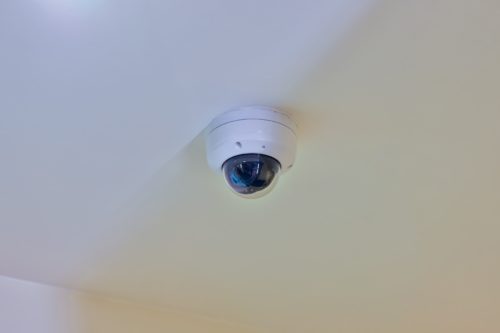
Bullet Cameras
Bullet cameras are typically designed for outdoor use, with a cylindrical shape that allows for extended viewing distance, making them ideal for perimeter monitoring. These cameras are durable and often weatherproof, built to withstand outdoor conditions.
Due to their visible design, bullet cameras also serve as a deterrent to potential intruders, signalling to onlookers that the area is under surveillance.
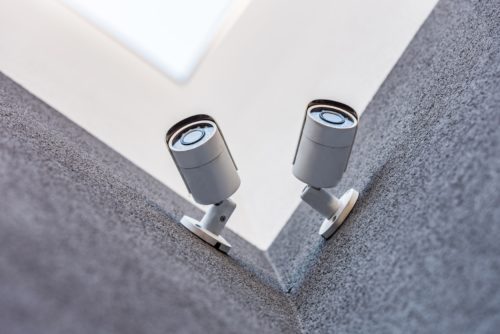
PTZ (Pan, Tilt & Zoom) Cameras
PTZ cameras offer versatility by allowing users to control the camera’s view remotely. These cameras can pan side-to-side, tilt up and down, and zoom in on specific areas, making them perfect for larger spaces or high-traffic areas where monitoring movement is essential.
PTZ cameras are commonly used in locations where flexibility and active tracking are required, such as warehouses or large commercial properties.
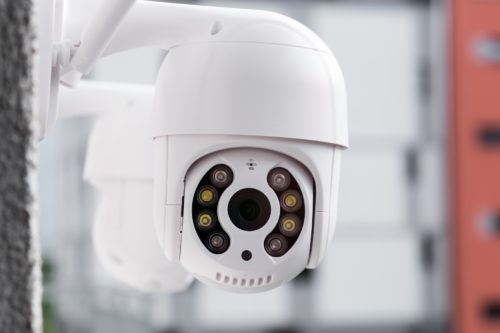
Day/Night and Thermal Cameras
Day/night cameras are designed for low-light environments, automatically adjusting to lighting conditions to capture clear footage both during the day and at night. These cameras are well-suited for areas that need 24-hour surveillance, such as building entrances or parking lots.
Thermal cameras, on the other hand, detect heat signatures rather than relying on visible light, making them effective in complete darkness or obscured conditions such as smoke or fog.
These cameras are often used in high-security environments or areas with poor lighting, as they provide visibility when standard cameras may struggle.
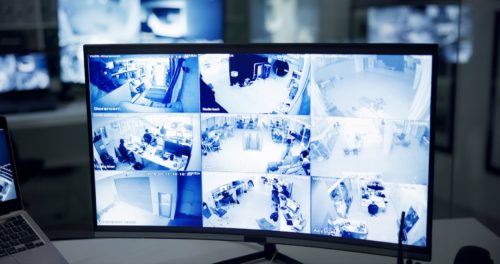
Network/IP and Analogue Cameras
Network/IP cameras connect over the internet and allow users to access live and recorded footage from any location with an internet connection. These cameras offer high-resolution video and are often used in more advanced setups where remote monitoring is essential.
Analogue cameras, by contrast, transmit footage through a physical connection, typically to a local recorder. While analogue cameras are still in use, they are less flexible than IP cameras and are often used in more localised systems.
BES Security provides professional assessments and installations for all these types of CCTV cameras. By analysing each client’s unique security needs, BES Security helps customers select the right system—whether wireless or wired—and ensures that all components are optimally placed for maximum effectiveness.
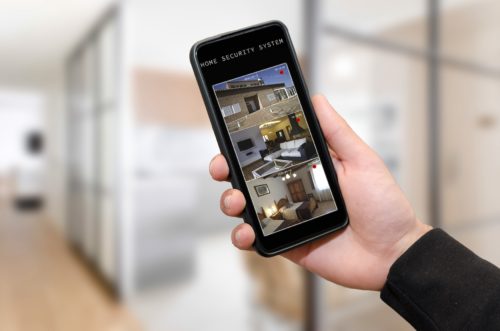
Benefits of Using a Wireless CCTV System
Flexibility and Ease of Installation
One of the biggest advantages of wireless CCTV systems is the ease of installation. Unlike wired systems, which require extensive cabling and labour, wireless systems can be set up quickly without the need for drilling through walls or running cables throughout the property.
This makes wireless CCTV particularly suitable for older buildings or properties where wiring may be challenging or impractical. With fewer physical restrictions, cameras can be strategically placed in optimal locations for coverage, enhancing overall security.
Another key benefit is the flexibility to relocate cameras as security needs change. Whether adding new cameras to cover expanding areas or moving cameras to focus on different zones, wireless systems are easily adjustable, providing a scalable solution for businesses and homeowners.
This adaptability means that as security requirements grow, the wireless CCTV system can evolve without requiring costly rewiring or installation work.
Remote Monitoring and Real-Time Alerts
Wireless CCTV systems offer the added convenience of remote monitoring, allowing users to access live footage and review recordings from anywhere with an internet connection.
Through a dedicated mobile or desktop app, users can log into their system to view video streams, monitor activity, or check on any recent events.
This capability is invaluable for those who want to keep an eye on their property while away, providing peace of mind even when off-site.
In addition to remote access, many wireless CCTV systems provide real-time alerts. If motion is detected or a camera is triggered, users receive instant notifications, enabling quick responses to any potential security breaches.
These real-time alerts ensure that users are always aware of what’s happening on their property, allowing them to take immediate action when necessary, further enhancing the level of security.
Cost-Effective and Minimal Maintenance
Wireless CCTV systems are generally more cost-effective than their wired counterparts, as they require less time and fewer resources for installation.
Without the need for extensive cabling and labour, setup costs are significantly reduced, making wireless options an appealing choice for cost-conscious property owners.
In terms of ongoing maintenance, wireless CCTV systems also tend to be simpler and more affordable. With fewer physical components, such as cables that may wear or need replacement, maintenance is minimal.
Battery-powered cameras may need periodic battery replacements, but beyond this, wireless systems involve fewer repairs and adjustments, keeping long-term costs low. This combination of reduced installation costs and minimal upkeep makes wireless CCTV systems an efficient, budget-friendly commercial security solution.
Wireless CCTV Systems FAQs
How does a wireless CCTV camera work?
Wireless CCTV cameras capture video footage and transmit it to a connected device or cloud storage through Wi-Fi or cellular signals, eliminating the need for physical cables.
The camera records footage and sends the data to a router or cellular network, where it is then accessible through an app or software on a mobile device, computer, or dedicated monitor. This setup enables seamless access to live or recorded footage, whether locally or remotely.
Can wireless CCTV systems work without the internet?
Yes, some wireless CCTV cameras can function without an internet connection by storing footage locally, either on an SD card within the camera or a local storage device. However, features like remote access, real-time alerts, and cloud storage typically require an active Wi-Fi or cellular network.
For users who prioritise remote monitoring, an internet connection is essential to make the most of the camera’s capabilities.
How far can a wireless CCTV camera transmit?
The transmission range of a wireless CCTV camera varies depending on factors such as the strength of the Wi-Fi signal, obstacles like walls or metal objects, and the camera’s specific capabilities.
On average, most wireless CCTV cameras can transmit up to 150–300 feet in open spaces, but this range may be shorter in areas with signal interference or obstructions. For extended range, Wi-Fi extenders or mesh networks can help improve connectivity.
Are wireless CCTV cameras reliable for outdoor use?
Yes, many wireless CCTV cameras are designed for outdoor use and come with weatherproofing to withstand rain, wind, and temperature fluctuations.
However, for reliable performance, it’s essential to consider factors such as power source requirements, as battery-powered cameras may need more frequent recharging in colder weather.
Signal interference and obstacles can also impact outdoor cameras, so positioning them within a strong Wi-Fi signal range is recommended for optimal performance.
What are the limitations of wireless CCTV systems?
Wireless CCTV systems have several limitations, primarily due to their reliance on Wi-Fi or cellular signals. Signal interference from other devices, network interruptions, and range limitations can affect performance.
Additionally, power supply is a consideration—battery-powered cameras need regular recharging or battery changes, and cameras connected to an outlet may have restricted placement options.
Lastly, data privacy is important to consider, as wireless data can be susceptible to unauthorised access if not properly secured.
How do I connect a wireless CCTV camera to my mobile phone?
To connect a wireless CCTV camera to your mobile phone, download the camera’s companion app from the app store. Once installed, follow the app’s setup instructions, which typically involve creating an account, scanning a QR code on the camera, and connecting it to your Wi-Fi network.
Once the camera is paired with the app, you can access live feeds, review recorded footage, and receive notifications directly on your mobile device, making it convenient to monitor your property anytime, anywhere.


